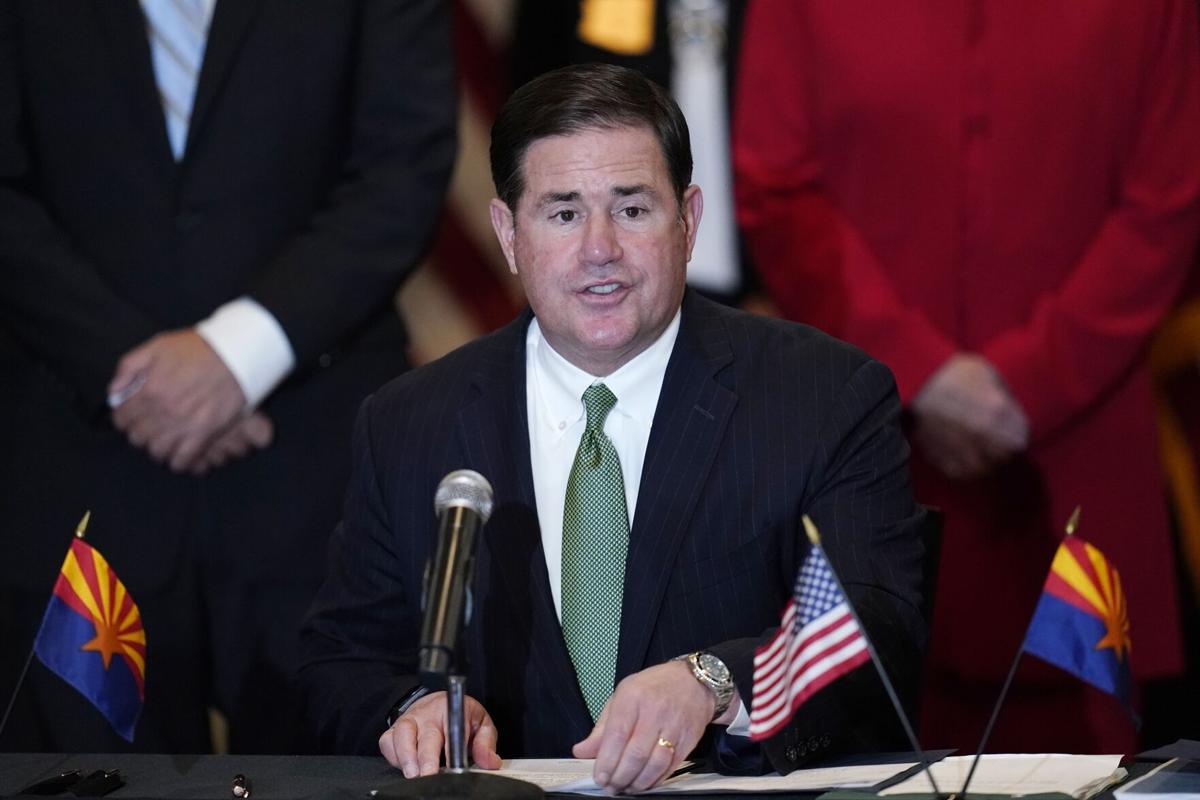PHOENIX — Gov. Doug Ducey is defending his promotion of a flat income tax rate as saving the average Arizonan $300 a year even though legislative budget staffers figure that 72% of state residents will see a benefit of less than $45.
And more than half will have a net benefit of no more than $17.
The governor’s comments came Thursday as he was asked whether he was worried that foes of his flat-tax plan have started petition drives to give voters the final say on what he has claimed to be among the top accomplishments of the just-completed legislative session.
Circulators need 118,823 valid signatures on petitions by Sept. 28 to put the Ducey-promoted tax cut on ice until the November 2022 election, at which time voters would get to ratify or nix the change approved by the Republican-controlled Legislature.
And the groups gathering the petitions have a track record. They are the same ones who have organized not only the successful drive to put Proposition 208 on the ballot but also a similar referendum two years earlier blocking a decision by lawmakers to expand who is eligible for vouchers of public dollars to send their children to private and parochial schools.
Ducey, for his part, brushed aside any concerns, speaking about the tax cuts as if they already were in effect.
“Today, Arizona has the lowest flat tax in the nation at 2.5%,” he said. He said the state can afford the tax cuts, estimated at $2 billion, saying Arizona has a $4 billion surplus while it has made “record investments in K-12 education, infrastructure, strengthening the social safety net.’’
“And, even with all that, there were dollars left over,” Ducey said. “So we wanted to return those to the citizens of Arizona who created the dollars in the first place.”
And what of those who are trying to get voters to review — and veto — both the size of the tax cut and who benefits?
“Of course, in this political environment you’re not going to please everyone,’’ the governor said. “We’re going to let the process play out while at the same time making sure that we’re doing everything we can to effect keeping Arizona the most attractive and competitive state in the nation.’’
Ducey then repeated his argument about the average tax cut being $300. And he rejected questions about whether that figure is misleading given that most Arizonans will see nowhere close to that.
The reason the “average’’ is where it is relates to two separate changes in the tax code.
First is that flat tax rate of 2.5%. That compares with current law that has a tax rate of 2.59% on the first $53,000 of taxable income for a married couple, rising in steps to 4.5% for earnings of more than $318,000.
So, by definition, the change is greater for those in the higher tax brackets.
Second is a provision designed to protect the wealthiest Arizonans.
Prop. 208, approved by voters in November, imposes a 3.5% surcharge on income greater than $250,000 for individuals and $500,000 for married couples. That would create an effective rate of 8% for taxable dollars above that figure.
A measure approved by lawmakers caps total income taxes at 4.5%, including the surcharge.
That’s why legislative budget analysts figured that those making more than $1 million a year will see more than 70% of the relief between what they would otherwise have paid and what the Legislature approved.
Still, Ducey defended that $300 average.
“It’s not misleading,” he said. “What is misleading is a 77% tax increase when people thought they were voting for some surcharge.”
That 77% figure is the difference between the prior 4.5% cap on taxes and what would be an 8% rate after adding that 3.5% surcharge.
But that, however, does not tell the entire story.
That surcharge — and the 8% tax rate — applies only on those taxable earnings above $250,000 for singles and $500,000 for couples filings jointly. So a married couple with taxable income of $650,000 a year would pay that 8% rate only on $150,000, with everything below that subject to the same rates as everyone else not affected by Proposition 208.
The governor also said the state can afford the tax cuts even with at least some of the current surplus due to an infusion of billions of dollars of federal COVID-19 aid.
“We are structurally balanced,’’ Ducey said. “We have over $1 billion or will have over $1 billion in our ‘rainy day fund.’” He also said the state is carrying over more money from last fiscal year to the new one.
“And our economy is booming,” the governor said. He said the reason the state has been able to put more money into education is “we’ve had people moving here, businesses growing here and people making more money here.’’





